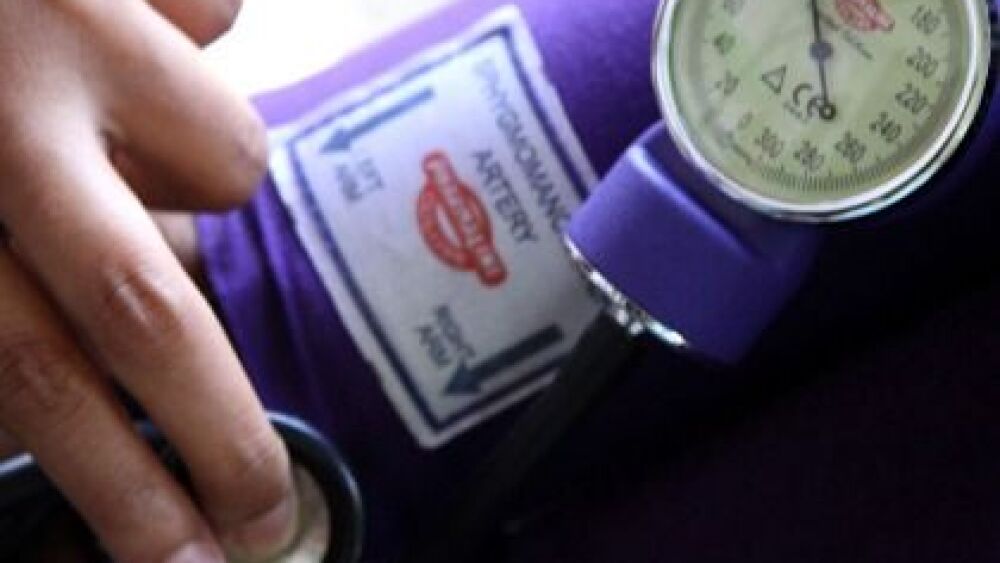Updated Apr. 9, 2018
By Patrick Lickiss
The tones sound and you roll out of bed. Dispatch announces, “Engine 3, Medic 104, respond Priority 2 to 762 East 4th Ave for a 74-year-old female complaining of weakness.”
You arrive on scene in front of a private residence in a nice residential neighborhood. Your first responders are already inside as you move up the steps.
You find the patient sitting on the edge of a hospital-style bed in the living room. Family is present and the engine lieutenant gives you a turnover:
“Good morning, this is Betty, 74 years old. Family called today after she fell trying to stand up from her bed. This is her fourth fall in two days, which is unusual for her. Each time she fell to a carpeted floor and does not appear to have been injured.
“She has a history of high blood pressure, diabetes and a stroke in 1998. She also has a history of dementia and her family thinks she is more confused than usual.”
Your patient does not appear to be in any obvious distress, though she looks frightened. Her initial vital signs are:
- B/P 112/68
- HR 60
- RR 24
The firefighter who took the patient’s vital signs says her skin felt warm to the touch. Using a temporal thermometer, you find her temperature to be 100.8 °F.
What do you think is the patient’s diagnosis?
Discussion
Several aspects of the patient’s presentation are cause for concern. First, her mobility has decreased recently, resulting in several falls. Second, her level of confusion has increased from what is normal for her. Third, she feels hot to the touch and is breathing rapidly.
The next step is to construct a differential diagnosis. With the patient’s previous history of a stroke, a neurological emergency should always be considered. You perform a Cincinnati Stroke Scale; although she is slow to respond, the results are negative.
The next easy diagnosis would be a diabetic emergency. You obtain a blood glucose and get a reading of 153 mg/dL. The family reports no history of diabetes.
With the patient’s fall history, trauma (particularly closed head injury) should be considered but the patient’s secondary exam findings are unremarkable.
Sepsis should be considered under certain circumstances
Given the patient’s age, vital signs and history of dementia, there should be one other differential diagnosis to consider: sepsis.
So what is sepsis? In brief, sepsis is an infection associated with inflammation throughout the body.
In these patients, the normal actions of the immune system, such as responding to bacterial toxins, are amplified. Inflammation is part of the body’s normal response to illness but in sepsis, the severity of the infection or immune system dysfunction results in abnormal inflammation.
If the infection causing sepsis is blood borne, the patient is said to have septicemia. This has caused the public to sometimes refer to sepsis as blood poisoning.
In order to identify sepsis, providers screen for Systemic Inflammatory Response Syndrome or SIRS when there is a known or suspected infection.
SIRS may be present in many patients but when seen with a source of infection, it indicates that the infection is especially severe. During systemic inflammation, oxygen demand throughout the body increases.
Prolonged inflammation causes organ dysfunction and decreased perfusion. As perfusion falls, the body begins anaerobic metabolism causing lactic acid to build up resulting in acidosis.
A screening for SIRS is positive when two or more of the following are found during a patient assessment:
- Temperature > 100.4°F or < 96.8°F
- Heart rate > 90 BPM
- Respiratory Rate > 20 per minute
- Abnormal white cell counts
If a SIRS screening is positive and there is a known or suspected infection, the patient should be assumed to be septic. Sepsis is a time-sensitive condition that requires decisive treatment.
In the United States, sepsis is the tenth leading cause of death and has been responsible for increased hospitalization in patients 65 and older [1,2]. In the United Kingdom, sepsis is responsible for 27 percent of ICU admissions and 46 percent of total days spent in the ICU [3].
There are a few things to keep in mind when screening for SIRS, however. The first is that a patient’s ability to compensate by becoming tachycardic may be affected by outside forces.
In the case of our 74-year-old patient, she has a history of hypertension and may be on medications like beta blockers which will keep her heart rate artificially low.
The second is that with EMS unable to screen for lab results (like white cell counts), we must rely on vital signs and thorough history taking.
Our patient obviously screens positive for SIRS with rapid breathing and a fever, but what about a source of infection?
Some patients are clearly suffering from infection, particularly those on antibiotics or coming from a nursing facility with a diagnosis of pneumonia or urinary tract infection (UTI).
Many times, however, diagnosis of an infection depends on a patient’s ability to communicate effectively. UTI, in particular, can be difficult to identify in patients with dementia [4]. In these cases, other symptoms like weakness, falls or mental status changes should be considered to indicate a suspected infection.
Treatment
Patients with sepsis require aggressive management delivered in six and twenty-four hour packages called Early Goal Directed Therapy (EGDT). The six-hour window for initial resuscitation includes:
- Oxygen as need to maintain SpO2 between 94 and 99 percent
- Blood Cultures
- IV Antibiotics
- Fluid Resuscitation
- Measuring Lactate and Hemoglobin
- Urinary Catheter to Measure Output [5]
Obviously several of these steps are already in the scope of practice for EMS. Since sepsis patients are as time-sensitive as stroke, STEMI and trauma patients, these patients should be treated aggressively by EMS.
Resolution
After determining that the patient screens positive for sepsis, first responders place the patient on high flow oxygen. You initiate an IV, start fluid resuscitation and begin transport.
En route to the hospital you start a second IV and draw blood cultures to turn in to the ED. During your radio report, you alert the hospital that you are transporting a potential sepsis patient.
After your arrival, the ED staff draws blood lactate levels, places a Foley catheter and starts the patient on a broad-spectrum antibiotic.
The six-hour package of treatment for EGDT is accomplished in one hour. The patient is admitted to the ICU for evaluation and further treatment. She is discharged home four days later with stable vital signs and in good spirits.
References
1. “0 leading causes of death by age group.” CDC.gov. CDC, 2007, Web. 9/21/2010.
2. “QuickStats: Hospitalization Rate for Patients Aged ≥65 years with Septicemia or Sepsis by Age Group — National Hospital Discharge Survey, United States, 2000-2007.” CDC.gov. CDC, 2007, Web. 9/21/2010
3. Robson, W; Nutbeam, T; Daniels, R. “Sepsis: A need for prehospital intervention?” Emerg Med J. 26 (2009): 535-538.
4. Agata, ED; Loeb, MB; Mitchell, SL. “Challenges in assessing nursing home residents with advanced dementia for suspected urinary tract infections” J Am Geriatr Soc. 61(2013): 62-6.
5. Robson, W; Nutbeam, T; Daniels, R. “Sepsis: A need for prehospital intervention?” Emerg Med J. 26 (2009): 535-538.













